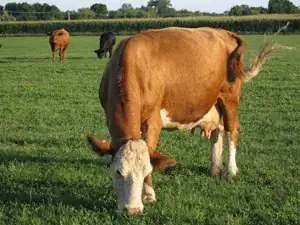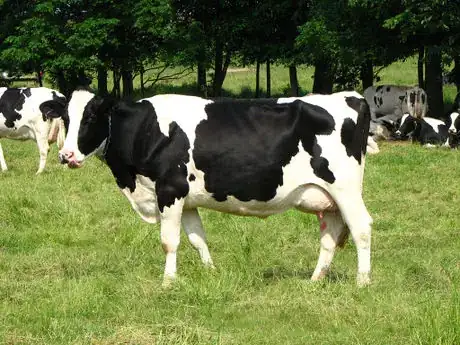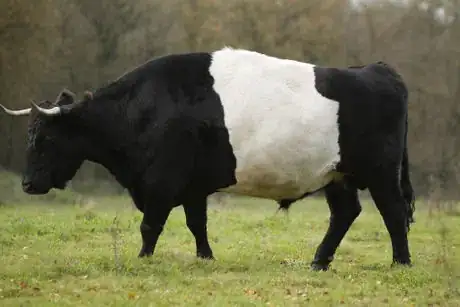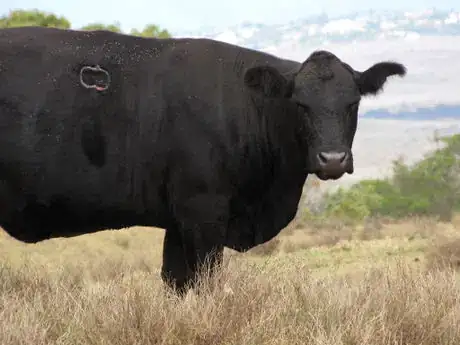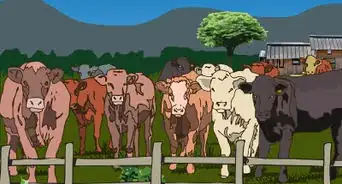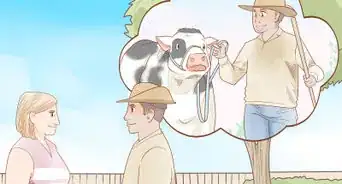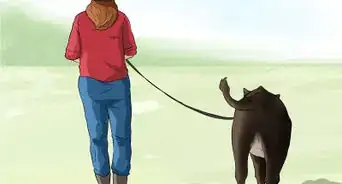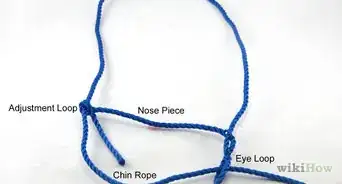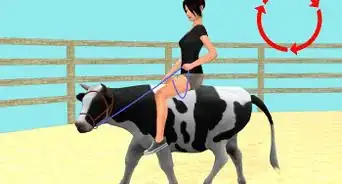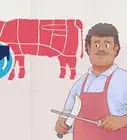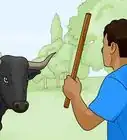This article was co-authored by Karin Lindquist. Karin Lindquist earned a BSc in Agriculture as an Animal Science major from the University of Alberta, Canada. She has over 20 years of experience working with cattle and crops. She's worked for a mixed-practice veterinarian, as a sales representative in a farm supply store, and as a research assistant doing rangeland, soil, and crop research. She currently works as a forage and beef agriculture extension specialist, advising farmers on a variety of issues relating to their cattle and the forages they grow and harvest.
This article has been viewed 40,570 times.
There are two primary types of modern cattle that are raised in the world: Beef cattle, and Dairy cattle. Unbeknownst to most, there are distinct characteristics of either that set them apart from each other, from level of fatness or "beefiness" to even coat colourations.
With modern society being primarily urbanized, sadly the media and the people who pay attention to such sources whom are generations removed from agriculture easily confuse beef cattle with dairy and vice versa. Those of farming backgrounds easily spot and point out the differences, however it is still too uncommon for people to fully comprehend such differences between these two types of cattle exist. This article hopefully helps point out those differences to better educate consumers and people in general how dairy and beef cattle are actually not as similar in appearance as once thought.
Steps
-
1Get two cattle pictures from your favourite search engine. Do an image search on "dairy cattle" and pick a random image from the first several that show up. Save it to your hard drive. Then do an image search on "beef cattle" and also pick a random image from the search results, also saving it to your hard drive. Print them out and lay them side by side. Or, bring up both pictures on your computer (preferably use a computer rather than a tablet or smart phone), reduce the window size so you can see them both at the same time without having to click back and forth between either image.
-
2Study the level of fatness. One bovine on one image should appear "fatter" or more muscular than the bovine in the other picture. Do not look at the belly, instead look at the ribs, the spinal column or "top line" of the animal all the way back to the hips. If the ribs and hips are more prominent in the animal in one of the pictures than the other, then it's likely that that thinner bovine is a dairy animal.
- Don't confuse emaciated with what is considered the "dairy look." Beef cattle have other characteristics besides level of fatness or muscularity to distinguish themselves from dairy cattle. Coat colouration is one significant identifier.
- Dairy cattle are actually not emaciated or malnourished, even when they appear that way. Dairy cattle are typically thinner looking because of their breeding. Artificial selection has made them into animals that, genetically, focus on milk production than building muscle and fat. Muscle building and milk production are genetically opposed in most animals (also expressed in sheep and goats), so a producer cannot focus on enhancing one trait without sacrificing the quality of other. This is why you see cattle that have dairy breeding in them with little muscling in the rear ("funnel butts") and a "thin" look no matter how well they are really being fed.
Advertisement -
3Look at the coat colouration of one of the pictured cattle. This is probably the harder part if you are not familiar with cattle breeds. However, since 95% of the world's dairy herd is Holstein, Holstein-Freisian or Freisian (the two breeds are very much related in bloodlines), and if by chance one of the cattle you have on your screen happens to be black and white, then it's actually a lot easier to identify a dairy cow than once thought. The picture in step 2 is one that matches this description exactly.
- Here's another fun thing to try: Pull up a picture, from your "dairy cattle" image search, of a brown dairy cow. Does she (or he if it's in fact a bull) have the same muscularly-structural qualities as in the step above? If yes, then look at the face. Black nose? Big soft, dark eyes? Dark hooves, fawnish-brown all over with a dark face? If you said yes to all, then you've pulled up a picture of a Jersey cow, also a dairy animal.
- You're going to find dairy bulls as well. The fifth step below will describe udder characteristics, but if you find a picture of a bovine with no large, well-developed udder between its legs and it bears the same characteristics already mentioned in the steps above, then you just happened across a dairy bull.
-
4Study the coat colouration of the next picture. Beef cattle, unlike dairy cattle, come in a much wider array of coat colourations and patterns than any dairy breed or cross breed can come out with. You will find in your search beef cattle that range from all black to all blonde, red with white, brown with white, all white, grey, mottled, very spotty, and even coats with both red and white hairs (roan). Black is the most popular colour in beef herds today, with Angus cattle being at the root of it all. Dairy cattle can be all black too, just by crossing breeding a Holstein cow to a Jersey bull (preferably that than a Jersey cow bred to a Holstein bull!), however even these cattle will still have the same musculature as mentioned in step two. Angus cattle, black Simmental, black Limousin, black Gelbvieh, etc. are all identifiable as beef cattle by musculature, bulls especially.
-
5Look at the size difference of the udders between dairy and beef cows. If you don't have two pictures of two cows (the female mature type, not the colloquial "cows"), find them in your search from step one. You should clearly see how the dairy cow, described above minus the udder, has a much larger udder than the beef cow. A fully mature beef cow's udder is almost hidden because it's both much smaller and often covered in hair, especially with cows that bear winter coats. A dairy cow has been genetically selected to produce almost five to eight times that of your average beef cow. In other words, where a dairy cow will be producing 8 to 10 gallons of milk a day, a beef cow typically only produces between 1 to 2 gallons per day. That's quite a difference!
